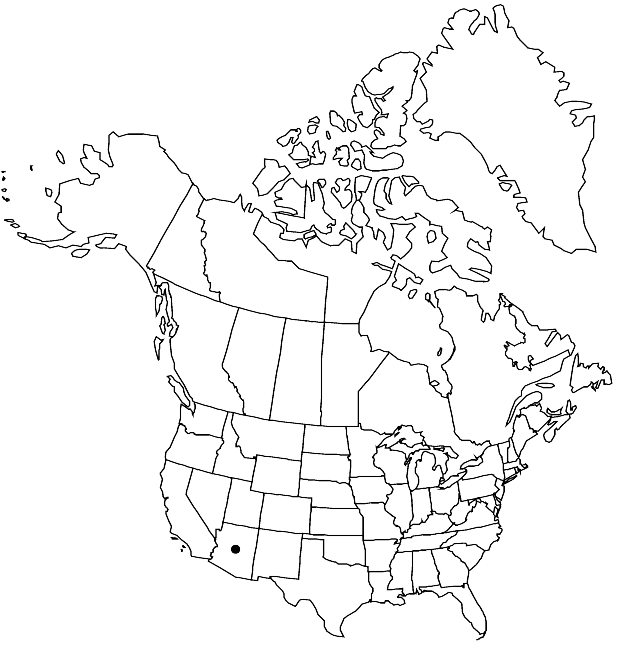Draba viridis
Muhlenbergia 1: 27. 1901.
Perennials; (long-lived, cespitose); caudex simple or branched (densely covered with persistent petioles); not scapose. Stems unbranched or branched, 0.35–3 dm, pubescent throughout, trichomes simple, 0.2–0.8 mm, with short-stalked to subsessile, cruciform ones, 0.05–0.2 mm. Basal leaves rosulate; petiolate; petiole ciliate, (trichomes simple, 0.4–1 mm); blade oblanceolate, 1–6 cm × 2–6 mm, margins usually entire, rarely denticulate, surfaces pubescent with stalked, cruciform trichomes, 0.1–0.5 mm. Cauline leaves 5–16; sessile; blade ovate to lanceolate or oblong, margins entire or denticulate, surfaces pubescent as basal. Racemes 11–28-flowered, ebracteate, elongated in fruit; rachis not flexuous, pubescent as stem. Fruiting pedicels divaricate, straight, 4–7 mm, pubescent throughout, trichomes simple (0.1–0.4 mm) and subsessile, 2–4-rayed (0.03–0.25 mm). Flowers: sepals oblong, 2–3 mm, pubescent, (trichomes simple and 2-rayed); petals yellow, oblanceolate, 3.5–5 × 1–1.5 mm; anthers ovate, 0.5–0.6 mm. Fruits lanceolate to ovate, often plane, flattened, 3.5–8 × 2–3 mm; valves pubescent, trichomes (vertical), simple and 2–4-rayed, (0.1–)0.3–0.8 mm; ovules 12–20 per ovary; style (1.5–)2–3 mm. Seeds ovoid, 1.2–1.5 × 0.7–0.9 mm.
Phenology: Flowering Aug–Sep.
Habitat: Open stands of pines
Elevation: ca. 2600 m
Distribution

Ariz., Mexico (Sonora).
Discussion
Of conservation concern.
Draba viridis has been reported from the Huachuca and Santa Catalina mountains in southern Arizona, and the adjacent San Jose Mountains in Sonora, Mexico. It was reduced to a variety of D. petrophila by Hitchcock and a form of D. helleriana by O. E. Schulz, but is easily separated from both (I. A. Al-Shehbaz and M. D. Windham 2007).
Selected References
None.